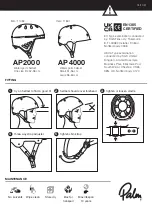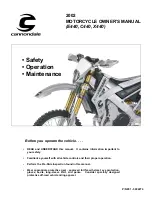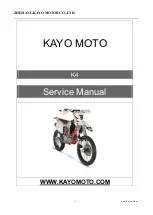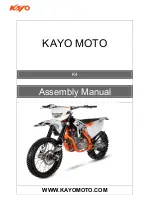
30
XRE300
·
XRE300A
Inspection
Whenever you check the tyre pressures, you should
also examine the tyre treads and sidewalls for wear,
damage, and foreign objects:
Look for:
Bumps or bulges in the side of the tyre or the tread.
Replace the tyre if you find any bumps or bulges.
Cuts, splits or cracks in the tyre. Replace the tyre if you
can see fabric or cord.
Excessive tread wear.
Also, if you hit a pothole or hard object, pull to the side
of the road as soon as you can safely and carefully
inspect the tyres for damage.
Cold tyre pressures
kPa (kgf/cm
2
, psi)
Front
Rear
Driver only
150
(1.50, 22)
150
(1.50, 22)
Driver and one
passenger
150
(1.50, 22)
200
(2.00, 29)
The recommended ‘‘cold’’ tyre pressures are:
Air Pressure
Properly inflated tyres provide the best combination
of handling, tread life, and riding comfort. Generally,
underinflated tyres wear unevenly, adversely affect
handling, and are more likely to fail from being
overheated. Underinflated tyres can also cause wheel
damage in rocky terrain. Overinflated tyres make your
motorcycle ride harshly, are more prone to damage
from surface hazards, and wear unevenly.
Make sure the valve stem caps are secure. If
necessary, install new caps.
Always check air pressure when your tyres are ‘‘cold’’
– when the motorcycle has been parked for at least
three hours. If you check air pressure when your tyres
are ‘‘warm’’ – when the motorcycle has been ridden
for even a few miles – the readings will be higher than
if the tyres were ‘‘cold’’. This is normal, so do not let
air out of the tyres to match the recommended cold
air pressures given below. If you do, the tyres will be
underinflated.
















































